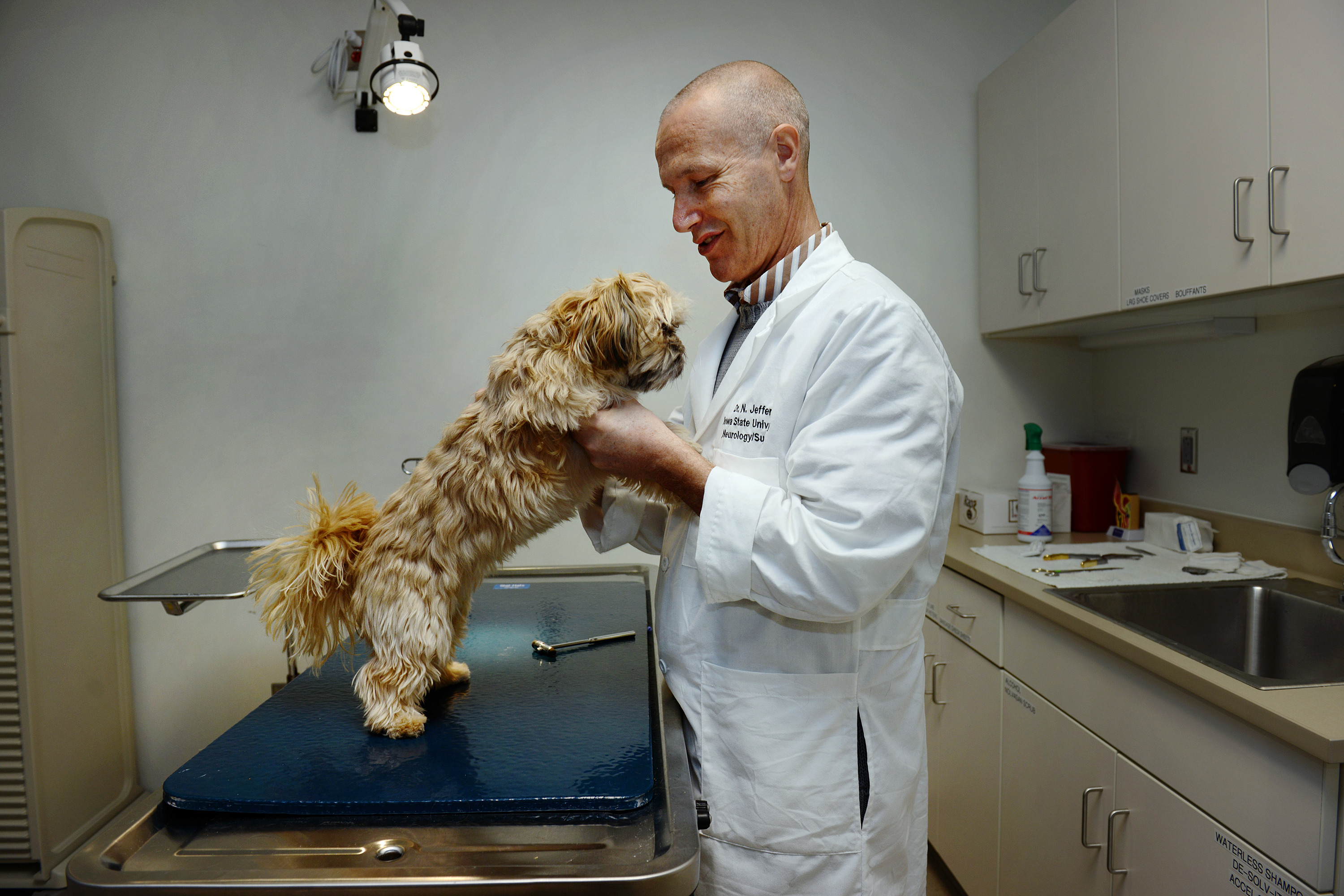
Nick Jeffery conducts an exam on a dog at Iowa State's Lloyd Veterinary Medical Center. Jeffery is researching new methods to treat spinal cord injuries in dogs. Photo by Amy Vinchattle. Larger image.
AMES, Iowa – Experimental treatments for spinal cord injuries in dogs conducted at Iowa State University could someday lead to more effective therapies for humans suffering from similar injuries.
Nick Jeffery, professor of neurology and neurosurgery in the ISU College of Veterinary Medicine, said the new treatment methods he’s studying in dogs can offer a more realistic picture of how humans would respond to new treatments than laboratory experiments on rats, a much more widely used method of gathering data on new medical procedures.
The tightly controlled laboratory conditions for rodents bear little resemblance to the clinical reality of human spinal injuries. But pet dogs that spontaneously suffer spinal injuries can offer a much closer match, Jeffery said.
“Lab conditions aren’t always useful for a good understanding of human clinical injuries,” he said. “But some of what we see in dogs is a step closer to how humans may respond to new treatments.”
Jeffery has looked closely at two different experimental treatment methods. The first involved culturing cells that connect a dog’s brain to its nose and then transferring the cells to the spinal cord. Jeffery is currently studying the effect of chondroitinase, an enzyme that can break down scar tissue when injected into the spinal cord of a paralyzed dog.
While the results of the cell studies fall short of miraculous – paralyzed dogs don’t suddenly start running around the park again – the treatments often result in a smoother and wider range of motion for injured dogs, he said. And a few individual cases have shown dramatic improvements.
“It’s an improvement, but it’s not magic,” Jeffery cautioned.
Jeffery looks for specific characteristics in candidate dogs that can be accepted to receive the experimental treatment. For starters, candidates must fit a certain weight range and suffer from a severe spinal cord injury near the middle of the back.
Beyond that, Jeffery will only take candidates he’s certain won’t benefit from conventional treatments and therapy, a requirement that greatly reduces the pool of eligible subjects. It’s common among dogs for the discs between vertebrae to degenerate and rupture, he said. But the vast majority of those cases improve with traditional treatment. It’s the dogs that don’t get better that Jeffery wants to study.
A research grant allows Jeffery to administer the treatments free of charge to dog owners whose animals are accepted, and he said some owners travel from states as distant as Florida to take part in the study.
Jeffrey said the work pays off in two important ways: it opens up a new option for dogs with spinal cord injuries and it lays the groundwork for a better understanding of how new treatments might work for humans with similar conditions.
“I’m a believer in the idea that veterinarians should be working in important areas of medical science for the benefit of both pets and people,” he said.